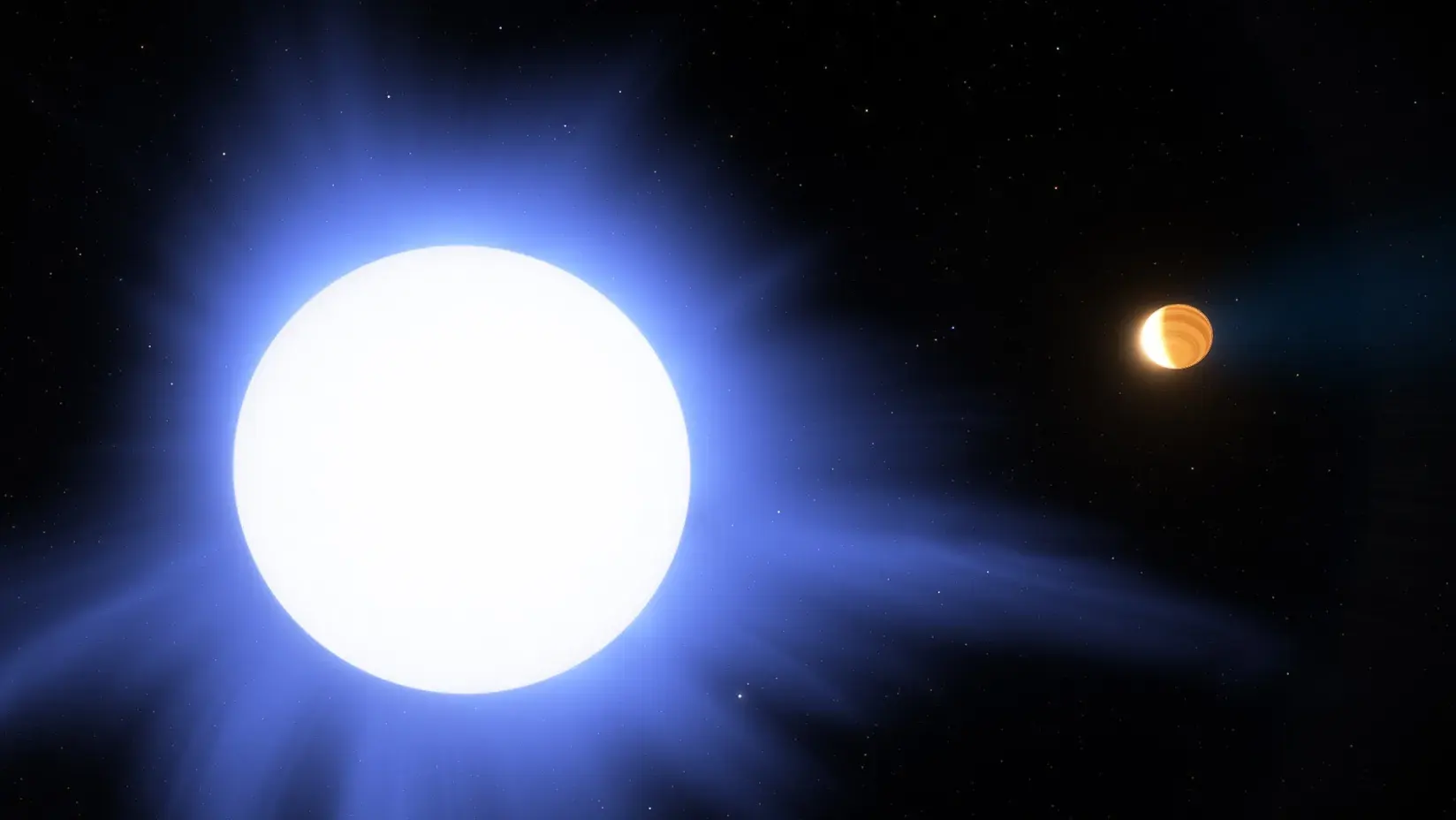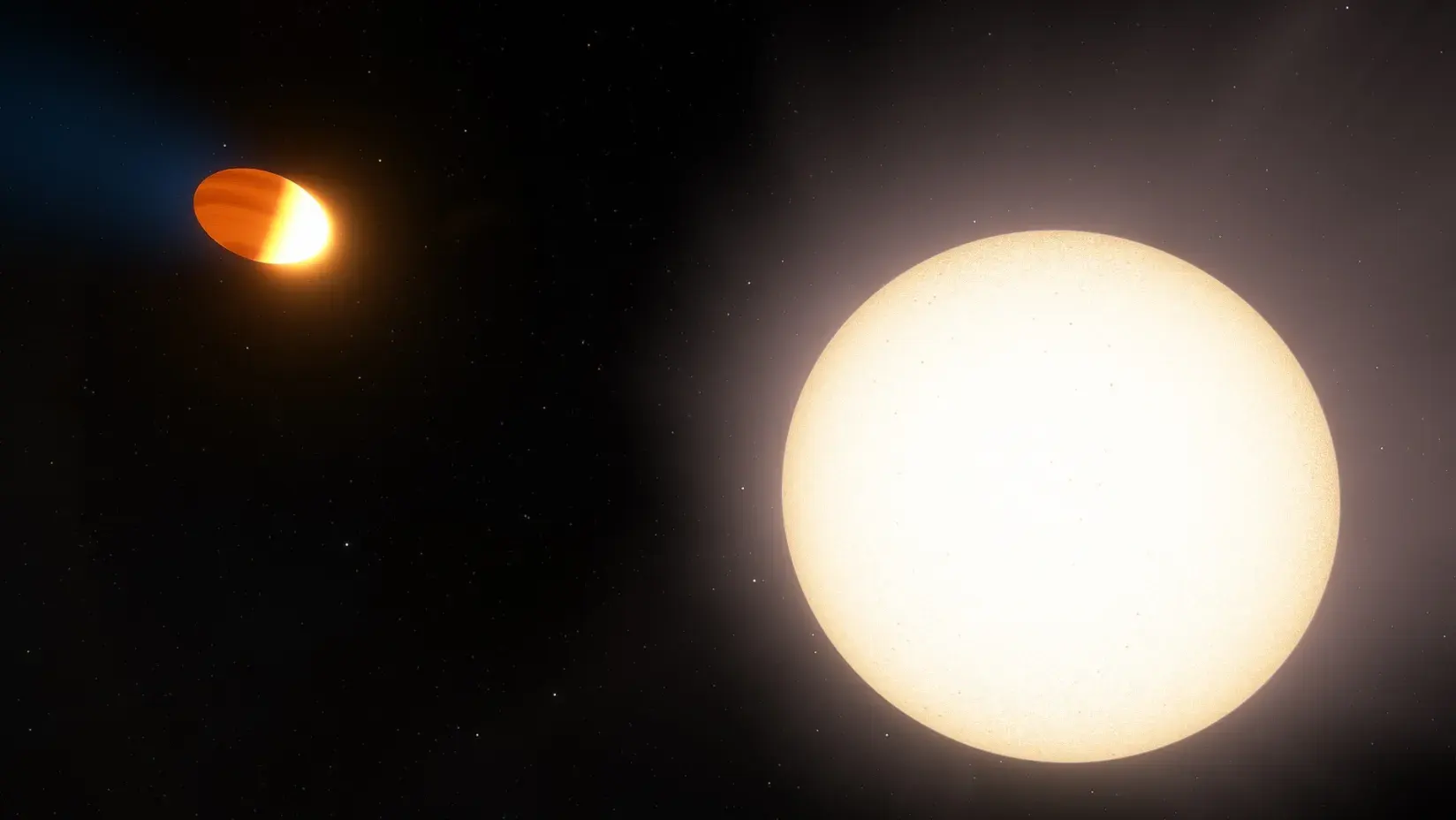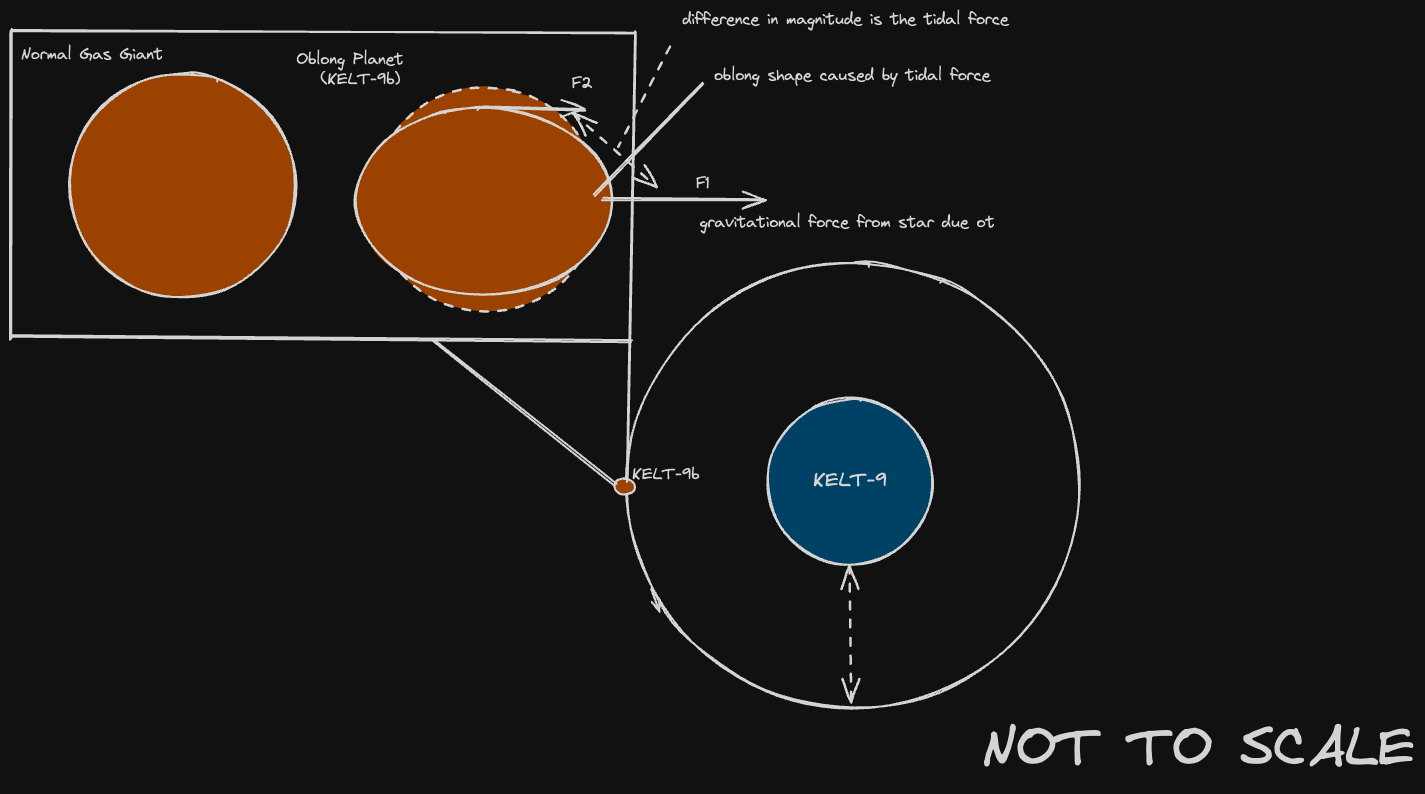Hot Jupiters are gas-giant planets comparable to Jupiter in terms of size and mass. However, there’s one thing that sets them apart from our beloved asteroid corral - they orbit their stars incredibly closely. Most of these planets are also tidally locked, the star’s tidal forces locking the planet in place, preventing it from rotating. For reference, the planet KELT-9b can reach temperatures of 4,600 Kelvins! This planet even manages to outshines some stars; Proxima Centauri, the closest star to us, shines at a temperature of 3,100 kelvins.

It wasn’t always this way. Hot Jupiters are theorised to have once been ordinary Jovians (large gas giants) migrating through the outer solar system. However, early solar systems are chaotic; through gravitational interactions with another planet or just smaller planetesimals, these giants would’ve migrated inward through the planetary disc. It would’ve torn through the inner system, sending rocky planetesimals flying out the system, preventing the creation of planets like the Earth. For similar planets of other sizes, astronomers have other classifications - namely, the Hot Neptunes or Hot Mini-Neptunes.
At distances so close to the star, the gravitational force from the central star is extremely large. This distance also lets us consider a planet as a system of particles given the reduced scale of the system, rather than an arbitrary ‘point’, common practice in two-body systems. As a result, we’ve got to consider the tidal forces acting on the planet - a measure of the difference between the gravitational force at a body’s equator and poles, where the radius to the sun is different. It’s the same mechanism that drive the tides on Earth, though on a much smaller scale! These tidal forces deform the planet, forcing the planet into an egg-like oblong shape.

This heralds the beginning of the end for these planets. Tidal forces act opposite the direction of the planet’s spin, reducing its orbiting speed. To compensate, the planet’s orbit ‘falls’, getting closer and closer to the star, all the while increasing the tidal forces on the planet. This cycle continues until the gravitational force imbalance between the equator and the poles overpowers the internal force holding the planet together, ripping it apart. All that’s left is a formless cloud of gas, slowly spiralling and accreting onto the star.

If not for the pull of Saturn, it’s highly likely that Jupiter would’ve met the same fate as these planets - oblong, egg-like, glowing an ugly yellow. Like the story of Icarus, it’s a reminder for our species (and planet!) to not stray too close to the sun, lest we all be consumed by the fire of solar plasma.
It’d make a great barbecue though - singly-ionised hydrogen? Count me in.
Like what you see? Feel free to subscribe to our blog to receive updates whenever we post.
Simulations of KELT-9 and WASP-12 taken with SpaceEngine.